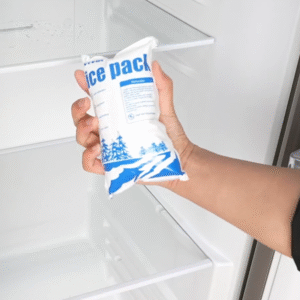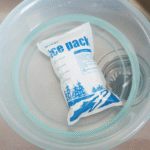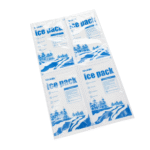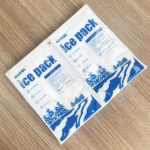How to Choose the Best Australia Dry Ice Packs for Your Shipping Needs?
Shipping perishable goods, whether food, pharmaceuticals, or biotech materials, requires ensuring a stable, cool environment to maintain their quality. Australia dry ice packs offer a reliable and efficient solution for long-distance shipping, keeping items cool for extended periods without the mess of melting water. In this guide, we’ll explore where to find the best dry ice packs in Australia, how to use them safely, and why they’re crucial for cold chain logistics.
What Are Dry Ice Packs and Why Are They Crucial for Shipping?
Dry ice packs are made from solid carbon dioxide (CO₂), which sublimates directly into gas at -78.5°C. This makes them ideal for transporting temperature-sensitive goods. Unlike regular ice, dry ice doesn’t leave behind water, ensuring that products remain dry and intact throughout their journey.
Why Choose Dry Ice for Shipping?
-
Temperature Control: Dry ice maintains sub-zero temperatures for extended periods, perfect for frozen foods, pharmaceuticals, and biological samples.
-
Longer Duration: Dry ice lasts significantly longer than regular ice, reducing the risk of spoilage during long-haul shipments.
-
No Liquid: The absence of water ensures that goods are not affected by moisture, a key consideration when shipping delicate or temperature-sensitive products.
Where to Find the Best Dry Ice Packs in Australia?
Finding quality dry ice packs is crucial to ensure safe and reliable shipping. Whether you need a bulk supply or a small quantity for a short shipment, Australia offers a range of suppliers:
1. Major Retailers Offering Dry Ice in Australia
-
Bunnings Warehouse: Known for large-scale dry ice sales for both commercial and individual uses.
-
Woolworths and Coles: Some grocery chains in Australia sell dry ice at certain times, especially during peak seasons.
-
Iceline: Specializes in dry ice products for various industries, including logistics and event management.
2. Dry Ice Suppliers in Australia
-
Australian Dry Ice: Offers custom pack sizes and quick delivery services tailored to businesses with regular needs.
-
Dry Ice Australia: Known for reliability in supply and expertise in applications across pharmaceuticals and food transport.
3. Gas Supply Companies
-
Air Liquide and BOC Gas: These companies offer dry ice as part of their industrial gas services. They have a wide network across Australia, catering to bulk and retail customers.
4. Local Ice Suppliers and Manufacturing Plants
Local ice manufacturing plants can provide dry ice in urgent situations, offering quick delivery and bulk purchase options.
5. Online Suppliers for Australia
Many online suppliers offer convenient dry ice delivery services across Australia. Purchasing in bulk can also help reduce costs.
How to Safely Use Dry Ice Packs in Australia?
Handling dry ice requires care due to its extremely low temperature. Here are safety precautions to follow:
-
Wear Protective Gloves: Always handle dry ice with insulated gloves to avoid frostbite.
-
Ensure Proper Ventilation: Dry ice sublimates into CO₂ gas, which can displace oxygen in confined spaces. Ensure there’s adequate ventilation in storage areas.
-
Use Insulated Containers: Store dry ice in insulated containers to prolong its effectiveness.
-
Follow Local Regulations: Australia has strict regulations for the transport of dry ice, especially by air. Be sure to follow these for safety and compliance.
Dry Ice vs. Regular Ice: Which is Better for Shipping?
When deciding between dry ice and regular ice for shipping, it’s important to compare their features:
| Feature | Dry Ice Packs | Regular Ice Packs |
|---|---|---|
| Temperature | -78.5°C (Sublimates) | 0°C (Melts into water) |
| Duration | Lasts longer | Melts quickly |
| Water Presence | No liquid residue | Melts into water |
| Cooling Efficiency | More efficient for long shipments | Less efficient, melts quickly |
Practical Tips for Shipping with Australia Dry Ice Packs
For Perishable Goods:
Ensure you use the correct amount of dry ice based on the shipment’s duration. For long trips, you may need to add extra dry ice to maintain the required low temperatures.
For Pharmaceuticals:
Use dry ice specifically designed for pharmaceutical shipping, ensuring compliance with all regulatory guidelines, including temperature monitoring.
For Sensitive Items:
When shipping biotech materials, ensure that your dry ice packaging is correctly designed to prevent condensation from affecting the contents.
Case Study: Efficient Use of Dry Ice for Australian Seafood Export
A leading seafood exporter in Australia successfully reduced spoilage by 30% by using custom-sized dry ice packs tailored to their packaging. By partnering with a local supplier, they ensured that their shipments arrived fresh, even after long transit times. The improved freshness enhanced their customer satisfaction, which led to stronger international trade relationships.
Trends in Dry Ice and Cold Chain Logistics in Australia (2025)
The cold chain logistics sector in Australia is evolving with new technologies and sustainability efforts. Some notable trends include:
-
AI-Driven Temperature Monitoring: Companies are adopting AI-powered sensors to monitor and optimize temperature control during shipping.
-
Eco-Friendly Dry Ice Production: More Australian companies are focusing on producing dry ice using sustainable methods, such as capturing CO₂ from industrial emissions.
-
Reusable Dry Ice Packs: To reduce waste and costs, there is a growing trend toward using reusable dry ice packs, which can be used for multiple shipments.
FAQ
Q1: Where can I buy dry ice packs in Australia?
Dry ice packs are available from major retailers, specialized dry ice suppliers, and online stores. You can also purchase them from gas supply companies.
Q2: How long do dry ice packs last during shipping?
Dry ice packs typically last between 24 and 72 hours, depending on factors like the amount used, packaging, and the shipment’s distance.
Q3: Is it safe to use dry ice in shipments?
Yes, but dry ice must be handled with care. Always use proper insulation and ensure adequate ventilation to prevent accidents.
Conclusion
Australia dry ice packs are essential for the safe and efficient shipping of temperature-sensitive products. Whether you are shipping seafood, pharmaceuticals, or biotech materials, knowing where to source the best dry ice packs, how to use them safely, and understanding the latest trends in cold chain logistics will help you maintain product quality and compliance.
























